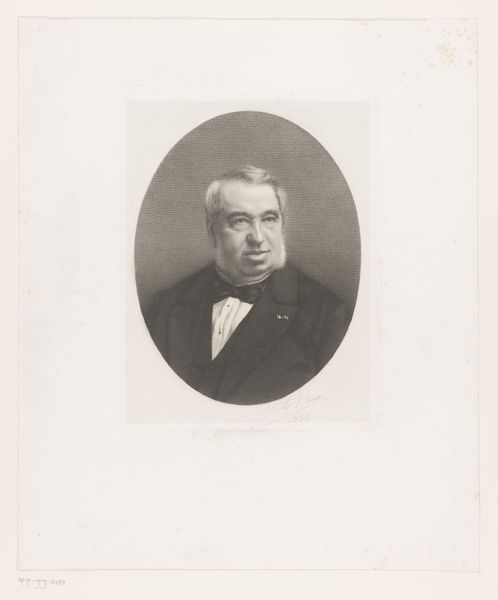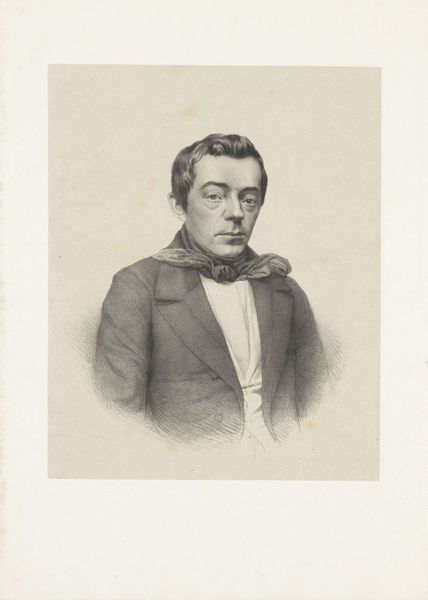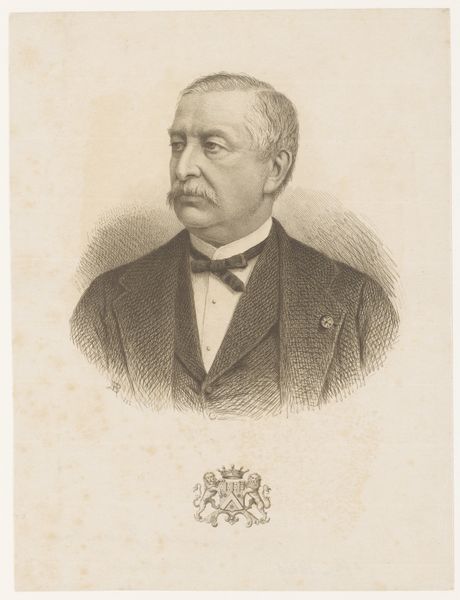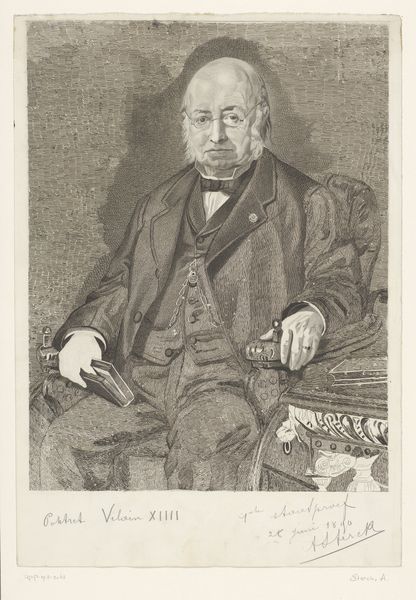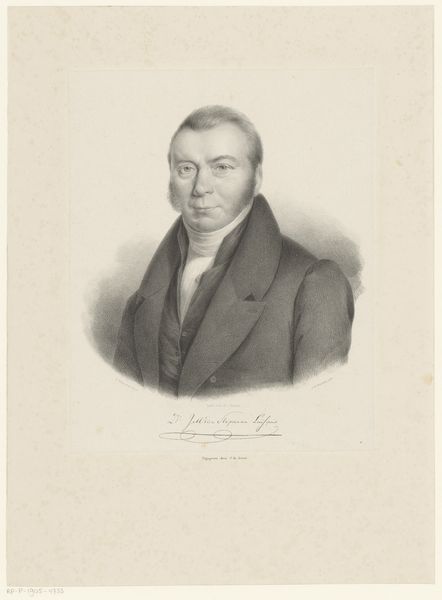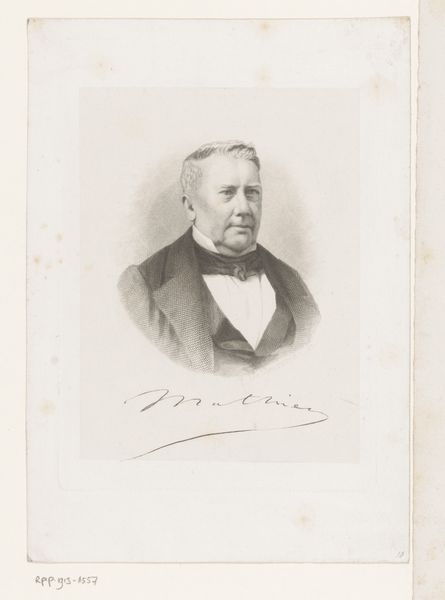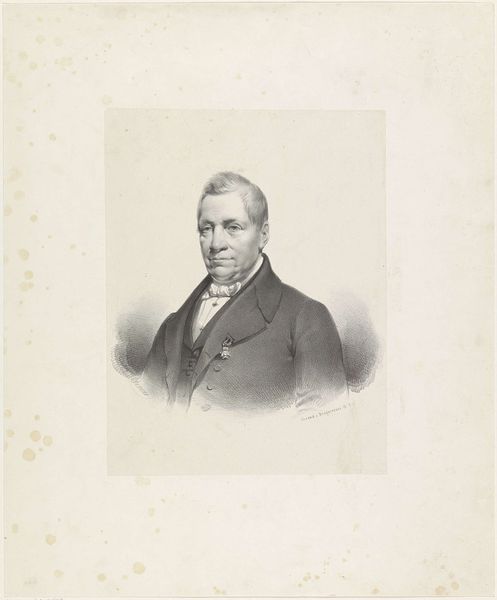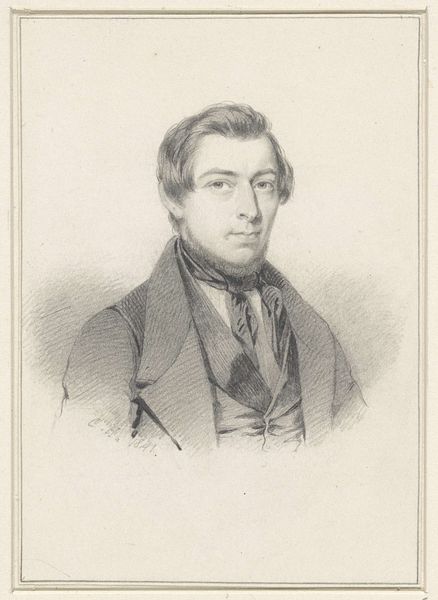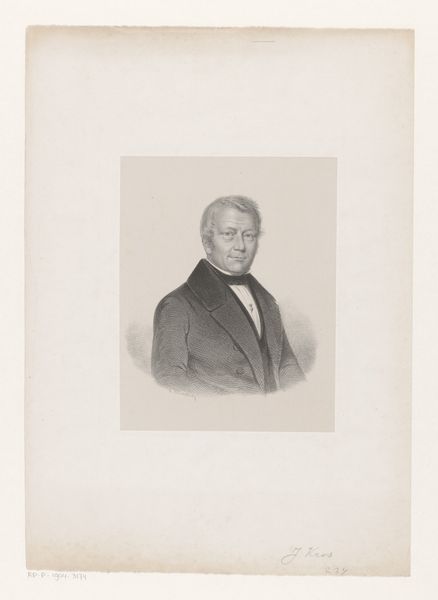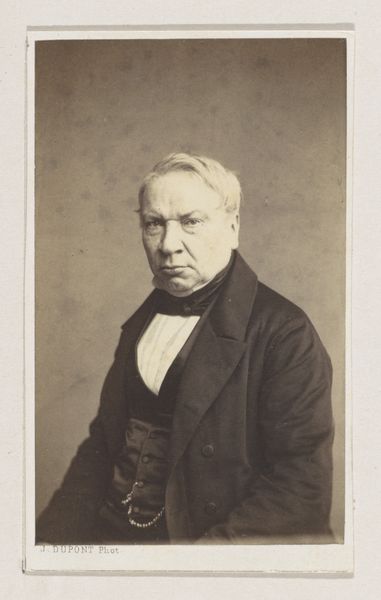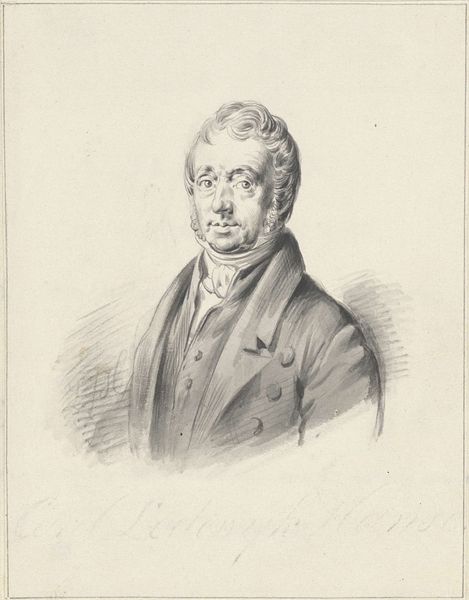
drawing, print, graphite, engraving
#
portrait
#
pencil drawn
#
drawing
# print
#
caricature
#
portrait reference
#
pencil drawing
#
graphite
#
portrait drawing
#
engraving
#
realism
Dimensions: height 266 mm, width 207 mm
Copyright: Rijks Museum: Open Domain
Curator: This is an engraving from 1884 by Auguste Danse, titled “Portret van een onbekende man, mogelijk Degand,” or Portrait of an unknown man, possibly Degand, in English. Editor: My initial response is drawn to the figure's serene countenance—his gaze is confident but not imposing, set against the softness achieved by the medium, graphite. There’s an immediate tension there. Curator: That contrast is palpable. This piece operates in a liminal space between documentation and artistic expression. The subject’s identity is uncertain. The lack of definitive knowledge pulls this portrait into a discussion about representation itself, about who gets remembered, and under what guise. Editor: True, the composition is fairly conventional; we have an oval framing a bust-length portrait, but the texture created through the graphite and engraving techniques lends the work an impressive material presence. It pushes it past mere record-keeping. The artist uses cross-hatching in subtle ways to add detail and shadow, which create depth and character in his face. Curator: Absolutely, but what if that face is symbolic beyond the purely aesthetic? This portrait could be interpreted through the lens of the rising merchant class, particularly their obsession with self-presentation. A professional, someone establishing themselves. His very being may be intertwined with the structures of capital at that time. How does this relate to present debates around image creation? Editor: Intriguing questions. And I wonder about the effect of mass reproduction in the print and the proliferation of this image, specifically the interplay between the unique artistic rendering and the serial nature that degrades, so to speak, the aura of the art object. It makes me wonder about ideas about authenticity as well. Curator: Precisely! Consider how portraiture then intersects with burgeoning print culture. What did such accessibility mean for concepts of individual identity in a rapidly industrializing society? Who were the gatekeepers, and what narratives were promoted and erased in the process? Editor: Thank you for these perspectives. Analyzing both the structure and the surrounding social factors offers a new depth of insight that goes beyond its appealing and subtle features. Curator: The work's enduring power resides precisely in its invitation to engage with such layered historical and cultural narratives.
Comments
No comments
Be the first to comment and join the conversation on the ultimate creative platform.
